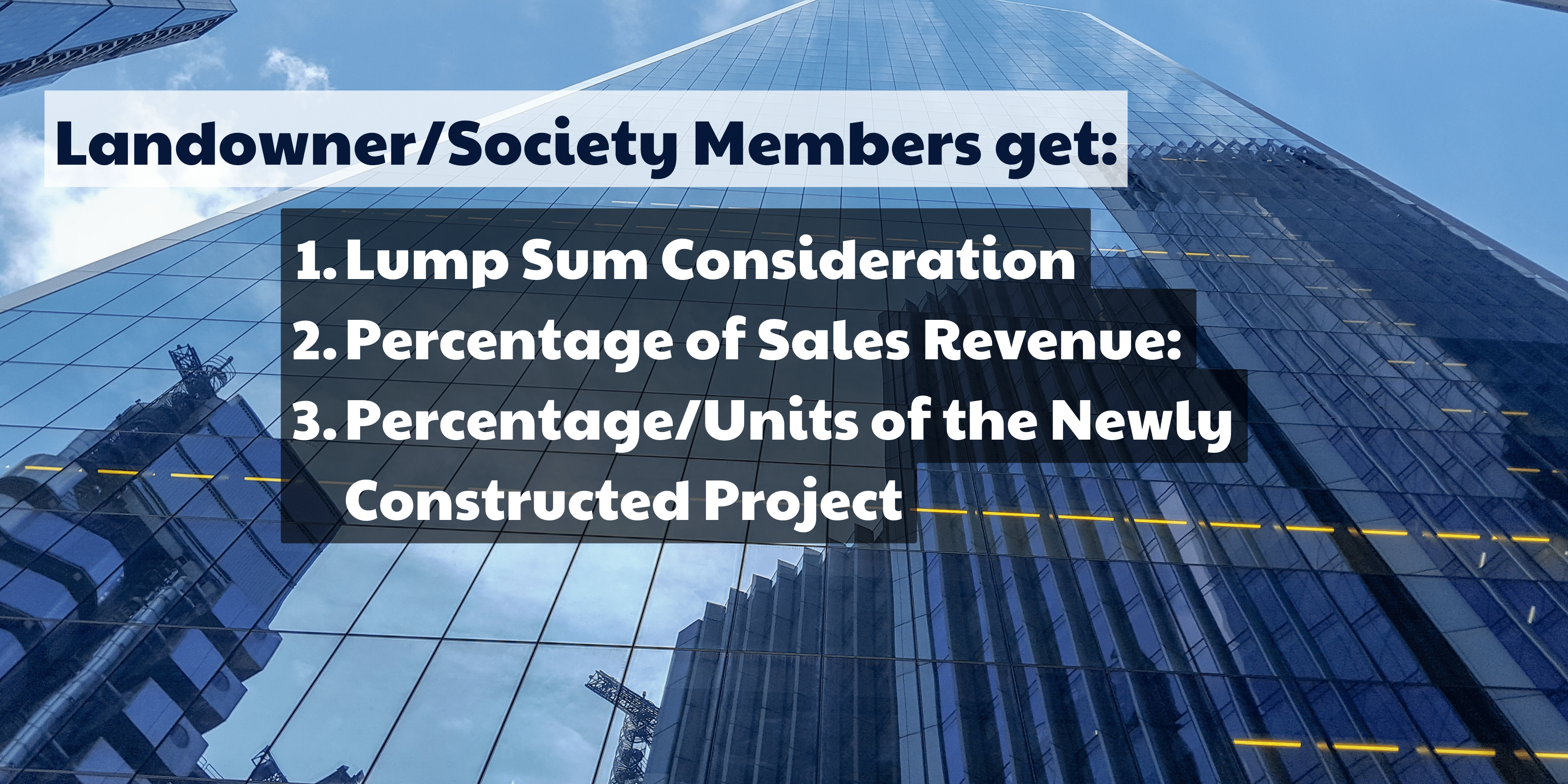Development Agreement Clauses
In the world of real estate, Joint Development Agreements (JDAs) have emerged as a powerful tool for property development. If you’re a landowner or a member of a society in India, considering ways to develop your land without the burden of hefty investments and bureaucratic hassles, JDAs might just be the game-changer you’ve been looking for.
Understanding Joint Development Agreements
In simple words, if you own land or a portion of a property in India and real estate builders are interested in acquiring construction rights to develop and sell a building project on your land, offering you a share of the profits or certain units as compensation, it’s essential to formalize this arrangement by entering into a development agreement with the builder. This agreement signifies your consent to grant the builder the development/construction rights.
Joint Development Agreement (JDA) is basically an agreement made between a builder and landowner/society in case of development of a plot or a redevelopment project. Here, the Landowner/Society contributed the plot area and the Developer takes full responsibility of constructing the building project in your land, approvals from government, cost of project, marketing expenses everything.
This arrangement allows landowners to leverage their property for development without the need for substantial upfront investments. In essence, you provide the land, and the developer brings their expertise and resources to the table.
Development Agreement safeguards both developer and the landowner from different types of terms, conditions, rights, privileges etc.
Development Agreement must be registered with the sub-registrar.
Major Clauses of Agreement:

- Party Details
– Land Owners
– Developers/Builders
- Property Details
– Ownership Details (Title Deed Details)
– Property Description
– Property History & Amalgamation
- Offer & Acceptance Between Land Owner & Developer/Builders
- Common Clauses
– Duties of Land Owner & Developer/Builders
– Rights of Land Owner & Developer/Builders
– Obligations of Land Owner & Developer/Builders
– Restrictions of Land Owner & Developer/Builders
– Miscellaneous Provisions
- The Property Schedule
– Detailed Attributes of the Property
– Master Plan/Master Sketch of the Project
– Map of Demarcated Portions (if applicable)
- Schedule of Land Owners Allocation
- Schedule of Developer/Builders Allocation
- Schedule of Materials Used in Construction
- The Payment Schedule
This structured breakdown ensures clarity and ease of reference within the Joint Development Agreement.
What the Developer Offers

When entering into a JDA, the developer commits to certain terms of compensation. This can take various forms, such as:
- Lump Sum Consideration: The landowner receives a fixed, one-time payment from the developer, it can be in crores.
- Percentage of Sales Revenue: The landowner gets a portion of the profits generated from the project’s sales.
- Percentage of the Newly Constructed Project: The landowner is given ownership of a specific units of the newly developed property, which can then be sold, rented or leased.
The specific terms and conditions are negotiated and agreed upon by both parties, ensuring a fair deal for all involved.

Benefits of Joint Development Agreements for the Landowner/Society
Now, let’s delve into why JDAs have become increasingly popular in the real estate sector:
- No Initial Land Investment: Perhaps the most significant advantage for landowners is that they don’t need to invest heavily in their land. The developer takes on the financial burden of construction, approvals, and marketing.
- Partial Stamp Duty Savings: JDAs often lead to reduced stamp duty expenses as the agreement typically involves the transfer of development rights, which can be subject to lower stamp duty rates.
- Accelerated Property Development: With the developer handling the financial aspects, property development can progress at a faster pace, leading to quicker returns.
- Fair Compensation: Landowners receive a fair and negotiated compensation for their land, ensuring they benefit from the development. In case of Redevelopment, the tenants will get a bigger portion then their existing flat. For Eg: If the tenants have a 1BHK flat in their building, they will be allotted 20% more area or a 2 BHK flat.
In a real estate landscape where opportunity often comes hand-in-hand with complexity and risk, Joint Development Agreements stand as a beacon of innovation. They empower landowners to make the most of their properties without the usual financial strain and administrative hurdles.
Before entering into a JDA, it’s crucial to consult legal and financial experts to ensure the agreement aligns with your interests and goals. With the right partnership and a well-structured JDA, you can unlock the full potential of your land and contribute to the ever-evolving urban landscape.
If you want a Development Agreement Draft/ Mortgage Clause – Contact us on admin@realestatefinance.in

